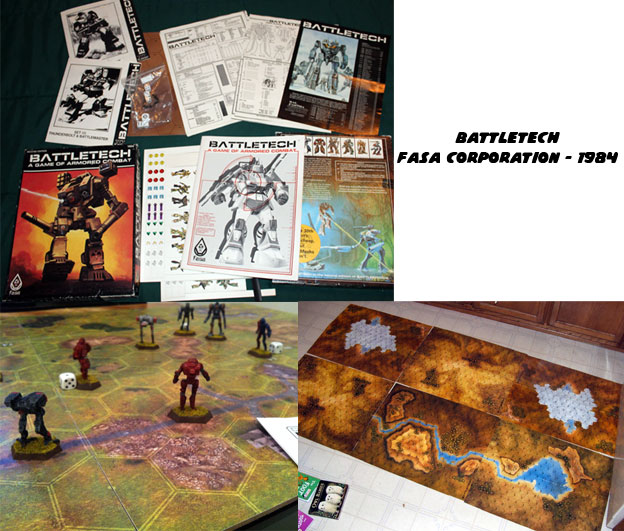
There was some litigation that almost sunk the entire Battletech franchise before it even got going. The USA had been exposed to anime and Japanese programming in the late '60s and through the '70s through translated shows like Kimba the White Lion, Astro Boy and Giant Robo. By the '80s it was starting to become popular thanks to the success of Robotech, which was an adapted version of Macross. Western-produced shows like the Transformers helped bring giant robots into the spotlight. FASA was ahead of the curve when they released Battletech and later MechWarrior. Yet they were able to be right on that trend because they took some shortcuts. Specifically they stole designs of robots from various Japanese shows such as Dougram and Macross, in their early releases. When word of this got out to the Japanese studios they were hit with a cease-and-desist. They had to recall the games and redesign the robots. The newer robots lacked the stylized Japanese designs but the system was still popular even after the re-release.
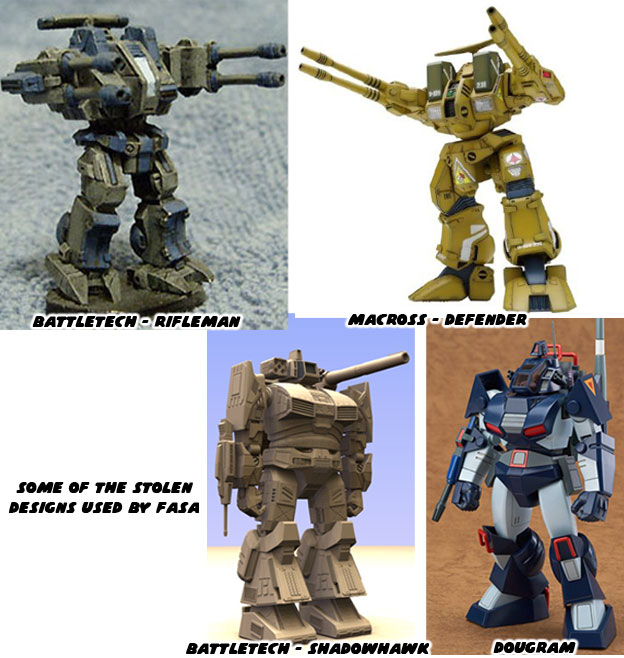
Battletech had a rich story to compliment the game. Various houses, like corporations, were fighting for territory. The giant robots were their champions and spearheaded all military encounters. Think about how similar the function of the robots in Battletech was to the Imperial Knights in Warhammer 40,000. Or to be more precise think about how they predated the Titans in 40K. Games Workshop was working hard to break into the USA tabletop gaming scene. The Warhammer Fantasy and science fiction systems were doing fairly well but when FASA released Battletech it really took a chunk of their potential customers away. The studio needed to respond and quickly, yet they did not simply want to make a game that was a Japanese robot knock-off title either. They went to the drawing board, got the input from their senior designers and storytellers and released Adeptus Titanicus in 1988. The game introduced audiences to the world of the Titans, pre and post-heresy in 40K continuity. These robots were very different than those in either US or Japanese science fiction titles. They were massive, often bigger than buildings. They looked like mechanized suits of armor or walking cathedrals.
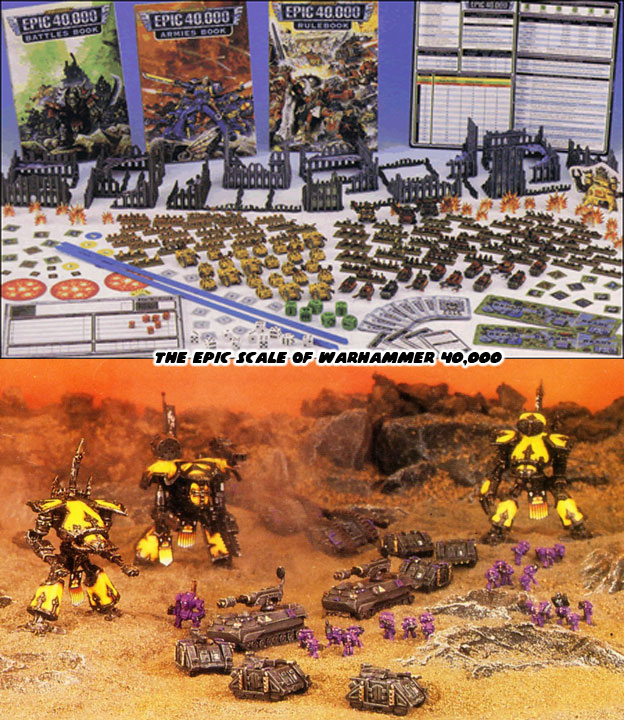
Games Workshop helped introduce a new scale of miniature to go with these giant robots. Most tabletop miniatures, not just for Games Workshop but for other titles as well were around 25-28 millimeters. If a figure were 28 millimeters tall then they represented a human just over six-feet in height. The size became known as "Heroic" scale. Adeptus Titanicus had gigantic robots that were so off the scale that a new form had to be created. It was called Epic scale, or 6mm scale. A Space Marine in a suit of power armor, somebody that was well over seven-feet tall, was just under 6 millimeters in height. Citadel actually created Titans in various sizes, the Warhound, Reaver and Warlord Titans for these games. They then followed up with a number of expansions to supplement the game. Each of these expansions introduced new models of Space Marines, heavy weapons and even Dreadnoughts in the new 6mm scale. The first expansion was actually called Space Marine. It was released in 1989.
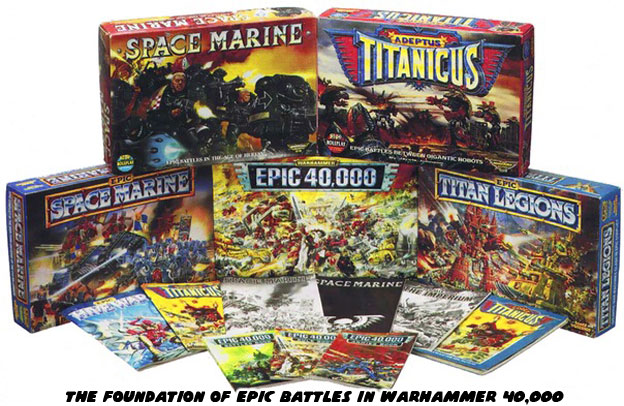
Fans of Battletech not only had the ability to choose from the various giant robots, they also had the ability to choose from smaller vehicle types and aircraft as well. This helped keep the game new and unique. Games Workshop was keeping an eye on this trend and responding with other expansion as well. Titan Legions, which introduced Titans from various alien races, came out in 1994. The final massive expansion to the system came out in 1997 with the release of Epic 40,000. With these expansions and the various Epic Scale miniatures released the collectors were able to do something that they could not afford to do otherwise. Collectors could actually buy and assemble an entire Space Marine chapter. Hundreds of individual Space Marines in 28 millimeters would cost thousands of dollars. Each transport and tank, from the Rhino and Land Raider, all the way up to the massive Baneblade could end up costing untold thousands as well. These awesome vehicles cost a fraction in 6mm and yet managed to contain an incredible level of detail. Players that had the time and patience to create a regiment would actually be able to do so without going bankrupt. The other great thing about working in this scale was that all of these units, vehicles and Titans could all fit on a table. On a table that was five feet long and three feet wide could maybe fit one or two of the smaller titans in the 28mm scale. Forget about a cast of thousands and a few dozen tanks for support.
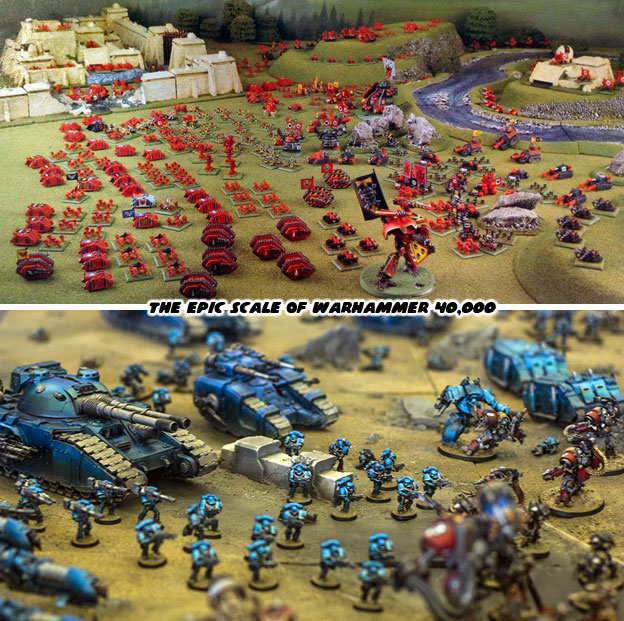
Games like Adeptus Titanicus and the Space Marine series helped introduce audiences to the world of Warhammer 40,000. Like Battletech these were self-contained experiences. They could be enjoyed by casual players just as much as veteran hobbyists. These games could be shared with friends or family. They would be easy to set up or tear down, with all the pieces and rules fitting in the box. Fans didn't have to paint the plastic robots once they were assembled and most expansions came with plastic or foam and cardboard buildings and terrain to help turn any desk into a bleak wasteland. Yet like many just getting into the hobby once they got bit by the bug they would want to customize their own units, paint their own robots and begin collecting an army. The people that were young men and women when they started playing the '80s would begin working in the '90s and have some disposable income to begin investing in the games. Games Workshop would follow the trends and offer bigger and better kits to help fill in the armies, whether in the 6mm or 28mm scale. As these gamers finished college and became working professionals post '00s then they had much more that they could spend on their hobbies. For those people Games Workshop began developing 28mm scale titans. They sold for hundreds of dollars yet became the centerpiece of many armies, and especially game stores.
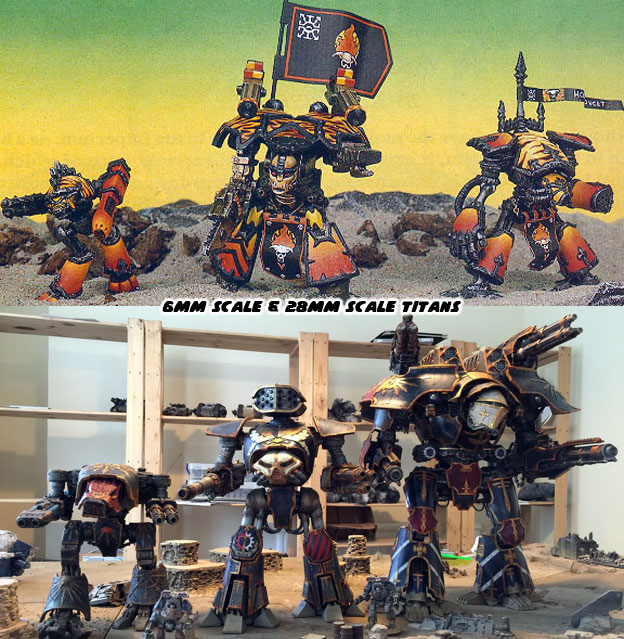
Adeptus Titanicus was not the only self-contained experience from Games Workshop that got audiences into the 40K universe. The studio actually had some great success in both the science fiction and fantasy systems. Each time the company released a new game it expanded the universe they had created and allowed fans to experience these worlds in entirely new ways. One of the more popular offshoots of 40K went on to become a best-selling PC game and get re-released as a collectible card game as well. We will look at this title in the next blog. As always if you enjoyed this blog and would like to sponsor me please visit my Patreon page and consider donating each month, even as little as $1 would help make better blogs and even podcasts!

Bit of a factual error in the post; FASA actually licensed the images of the mecha from Macross for use in BattleTech, but did not receive licensing to produce miniatures based on those images, which was part of the legal feud. Also, the original litigation didn't come from the Japanese creators, but from Harmony Gold USA, another company which held a license to essentiall build up the franchise in the Western market (they were responsible for translating the series', and also produced toy lines and other media based on the shows).
ReplyDelete